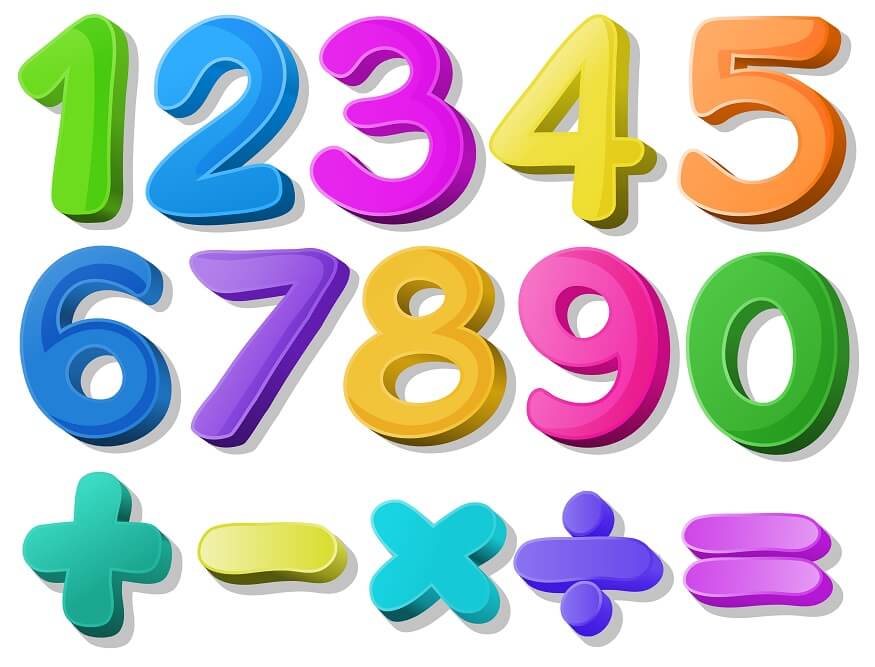Numerical expressions form the bedrock of mathematical understanding, even for the youngest learners in preschool. These elementary concepts, involving numbers and basic operations like addition and subtraction, lay the groundwork for a lifetime of mathematical exploration. In this article, we delve into the fascinating realm of teaching numerical expressions to preschoolers, emphasizing interactive and engaging approaches. By fostering a positive attitude towards math from the outset, we aim to create an environment where these budding mathematicians not only grasp numerical concepts but also develop a genuine love for problem-solving and learning.
Understanding Numerical Expressions
Preschoolers embark on a multifaceted mathematical exploration, where numbers cease to be abstract entities and transform into tangible quantities. The initial steps involve engaging in activities that go beyond the traditional classroom setting. Counting becomes an interactive adventure, whether it’s counting apples during snack time, fingers during play, or toys during a shared playdate. These activities transcend rote learning, creating a dynamic environment that caters to diverse learning styles.
The foundation laid during these activities serves as the cornerstone for numerical understanding. Preschoolers don’t merely memorize numbers; they interact with them, touch them, and incorporate them into their daily experiences. This hands-on approach fosters a solid conceptual understanding that goes beyond numerical rote memorization.
As young learners become comfortable with the concept of numbers, the introduction of simple mathematical symbols becomes a natural progression. The symbols + (addition) and – (subtraction) are not mere abstract representations on paper; they evolve from the tactile experiences of counting toys or removing objects during play. This transition from the concrete to the symbolic marks a crucial developmental phase, where numerical expressions cease to be isolated concepts and integrate seamlessly into a child’s growing mathematical worldview. The integration of symbols is not just a mathematical milestone; it is a cognitive leap. Preschoolers begin to grasp the idea that numbers can be manipulated and combined, laying the groundwork for more advanced mathematical concepts in the future. This journey of understanding numerical expressions transcends the boundaries of a conventional classroom, turning everyday experiences into opportunities for mathematical discovery.
Solved Problems for Preschoolers
- Counting Fruits
- Adding Toys
- Sharing Candy
Problem: If you have three apples and eat one, how many apples do you have now?
Solution: Start with three pretend apples, then physically remove one. Count the remaining apples: 1, 2. So, you have two apples left.
Problem: If you have two toy cars and your friend gives you one more, how many toy cars do you have altogether?
Solution: Begin with two toy cars, then introduce a third. Count all the cars: 1, 2, 3. You now have three toy cars.
Problem: If you have four candies and you want to share them equally with your two friends, how many candies does each friend get?
Solution: Use four small objects as candies and distribute them between two friends. Count the candies for each friend: 1, 2. So, each friend gets two candies.
Hands-On Activities
- Math with Playdough
- Number Line Adventure
- Storytime Math
Rolling out playdough into small balls transforms math into a hands-on, tactile adventure for preschoolers. These malleable counters bring mathematical concepts to life as children engage in addition and subtraction. For instance, if you start with three balls and take away one, not only does this activity reinforce numerical expressions, but it also enhances fine motor skills and creativity. The pliability of playdough adds a sensory dimension to learning, turning a simple math exercise into a dynamic and enjoyable experience that encourages exploration and experimentation.
Creating a number line on the floor with tape transforms numerical learning into a visual adventure for preschoolers. Placing toys or drawings along the line turns the abstract concept of numbers into a tangible experience. Asking questions like, “If you start with the teddy bear at 2 and jump forward 3,” not only reinforces numerical understanding but also encourages spatial reasoning and critical thinking. This interactive activity brings math to life, transforming a simple floor tape into a pathway of discovery where every step becomes a numerical journey.
Incorporating numerical expressions into storytelling weaves an enchanting tapestry of math for preschoolers. For instance, “You have 2 magical fairies, and they each make 1 wish. How many wishes do they make in total?” This not only integrates math seamlessly into imaginative play but also fosters a love for learning by turning numerical concepts into captivating tales. Storytime math transforms abstract ideas into tangible scenarios, making numbers an integral part of a child’s imaginative world, where every story becomes a numerical adventure waiting to unfold.
The Role of Play in Learning
Preschoolers thrive in learning environments that blend education with play. The hands-on activities mentioned earlier not only make learning enjoyable but also aid in the development of fine motor skills and cognitive abilities. Playdough, for instance, serves as a versatile tool for tactile learning, allowing children to physically engage with mathematical concepts.
Building Early Problem-Solving Skills
Numerical expressions provide an excellent platform for introducing basic problem-solving skills. Pose open-ended questions that encourage critical thinking. For example, “You have 5 candies, and your friend gives you some more. How many candies might your friend give you, and how many will you have in total?
Building a Foundation for Future Learning
These early experiences with numerical expressions serve as building blocks for more complex mathematical concepts down the road. By combining play with foundational math skills, parents and educators lay the groundwork for a positive attitude towards learning and problem-solving. Numerical expressions, at this stage, are not just about memorizing facts but about understanding the logic behind mathematical operations.
Interactive Technology in Learning
As technology becomes increasingly integrated into education, age-appropriate interactive apps and games can play a role in teaching numerical expressions. There are numerous apps designed specifically for preschoolers that use animation, sound, and touch to make learning engaging and interactive. These applications not only introduce numerical concepts but also cater to different learning styles, providing a dynamic and personalized learning experience. The incorporation of technology adds a layer of excitement to the educational journey, making mathematical exploration an immersive and enjoyable adventure for young learners.
Challenges and Solutions
It’s essential to acknowledge that each child progresses at their own pace. Some preschoolers might grasp numerical concepts quickly, while others may need more time and varied approaches. Tailoring activities to suit individual learning styles and providing ample opportunities for repetition and reinforcement can address these differences.
Parental Involvement and Support
Parents play a crucial role in supporting their preschoolers’ mathematical development. Simple activities like counting objects during daily routines, incorporating math into playtime, and praising effort rather than just the right answers all contribute to a positive math experience.
Parent-Teacher Collaboration
Effective communication between parents and teachers is integral to a child’s educational journey. Regular updates on a child’s progress, challenges faced, and strategies that prove effective at home and in school contribute to a holistic approach to learning.
Monitoring Progress and Celebrating Achievements
Regular assessment of a child’s understanding of numerical expressions helps identify areas that may need reinforcement. Celebrate small victories and progress, fostering a positive attitude towards learning and instilling confidence in tackling more complex mathematical challenges.
Incorporating Numerical Expressions into Everyday Life
Beyond dedicated math activities, opportunities to reinforce numerical expressions abound in everyday life. Whether it’s counting steps during a walk, dividing snacks equally among siblings, or exploring shapes while playing with building blocks, there are countless ways to integrate math into daily routines.
Math as a Social Activity
Encourage group activities that involve mathematical concepts. Games like “Number Bingo” or collaborative building projects where children use a specific number of blocks promote social interaction while reinforcing numerical expressions.
Incorporating Diversity in Numerical Examples
Ensure that numerical examples used in activities and stories reflect diversity. Using a variety of names, objects, and scenarios from different cultural backgrounds fosters inclusivity and broadens a child’s understanding of the world around them.
Connecting Numerical Expressions to Other Subjects
Integrating math with other subjects, such as language arts or science, enhances cross-disciplinary learning. For instance, counting and sorting leaves during a nature walk not only sharpens numerical skills but also combines math with science exploration. This holistic approach enriches a child’s understanding, demonstrating that numerical expressions are not isolated concepts but integral elements that weave through various facets of knowledge. As leaves are counted and sorted, numerical expressions seamlessly integrate with the wonders of the natural world, creating a dynamic learning experience that transcends traditional subject boundaries.
Our exploration into introducing numerical expressions to preschoolers is more than a pedagogical endeavour; it’s a journey of cultivating a lifelong love for numbers and problem-solving. By recognizing diverse learning styles, expanding hands-on activities, and embracing technology judiciously, we aim to create an environment where math is not just learned but enjoyed. The collaboration between parents and teachers, the integration of math into daily life, and the celebration of small victories collectively contribute to a holistic approach to early mathematical education. Through these efforts, we hope to empower preschoolers with not just numerical proficiency but a curiosity and enthusiasm that will serve them well on their academic journey and beyond.
For more such interesting blogs, Visit EuroKids.











